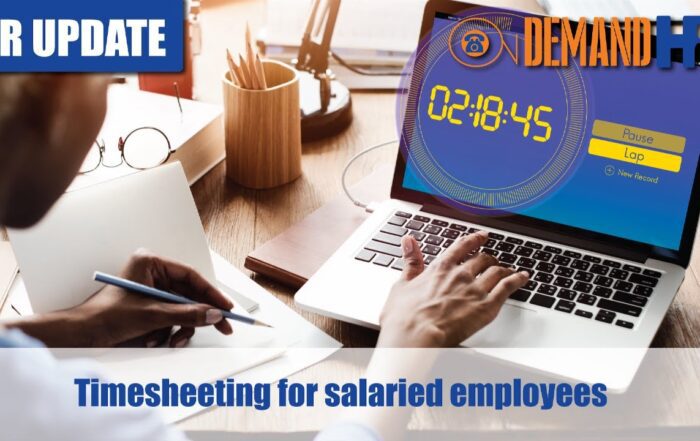The Great Retention
Late 2021 / Early 2022 was according to many analysts the period of the Great Resignation. However, what we are now seeing is that a very large part of 2022 may become known as the Great Retention. With 4% unemployment, businesses are being forced to focus on retaining their current staff who are spoilt with unprecedented choice in the market. Today, we are going to share some of the strategies that we have discussed or recommended to our clients in order to retain staff in 2022.
Please see below for a full transcript of this video
Share the HR or workplace relations challenge facing your business and one of our experienced consultants will be in touch within 24 hours with a strategic action plan or discover the best strategy yourself by accessing out free online training library.
Transcript
Late 2021 / Early 2022 was according to many analysts the period of the Great Resignation. However, what we are now seeing is that a very large part of 2022 may become known as the Great Retention. With 4% unemployment, businesses are being forced to focus on retaining their current staff who are spoilt with unprecedented choice in the market. Today, we are going to share some of the strategies that we have discussed or recommended to our clients in order to retain staff in 2022.
With record low sub 4% unemployment, businesses are fast discovering that it is exceedingly difficult and costly to fill vacant positions and at the same time are under seige from competing offers and opportunities even with their current staff to looking for greener pastures elsewhere.
In the great work from home experiment that we call Covid-19, there is little doubt that employees expectations regarding workplace flexibility have changed especially for white collar workers and for many businesses when it comes to retaining staff, workplace flexibility may be the low hanging fruit.
So what does workplace flexibility even mean? Well the typical example we give to clients to try and frame the conversation is that it is no longer acceptable to employees to be directed to come to the office and work from home by exception. It is actually the other way around! You need to have structure and a good reason why employees are required to come to the office on a specific day.
To give a real life example of this from our own business at On Demand HR, we have one day per week where all employees come to the office. What’s the agenda for the day? We begin with a lengthy & structured team meeting, where we brainstorm future ideas, collaborate on client problems and set the agenda and task list for the week. Following the meeting the company pays for lunch and then we break out into 1-1 meetings as required. On Fridays several team members come to the office to collaborate on technical matters not requiring input from the rest of the team.
Whats the common denominator here? The time staff are expected to be in the office is structured, enjoyable and has a purpose and this is a great point for your business to start considering how to manage workplace flexibility, because if you don’t we can assure you that your competitors are!
A couple of other considerations when it comes to workplace flexibility. Of course, employees can have the choice to come to the office if they prefer (for example to get away from screaming kids), however what we are getting at here in terms of retention is the time that the employees are required to come to the office needs to be carefully considered.
Don’t forget about your employees who are not able to work from home. Of course this is going to vary from business to business but one of our clients has not forgotten about the weekly BBQ for it’s factory workers which seems to work a treat! So don’t be afraid to get creative.
You need to focus on training and developing your line managers to manage their staff remotely. We have seen many instances where the strategic direction of the business has been to provide workplace flexibility but line managers are hesitant to implement this strategy for their teams as they are still of the older mindset of “if I cant see them, they are not working”.
The best line managers these days understand that they need to change their management style from a “bums on seat” mindset to a true measurement of value, outcomes and results. delivered and some of them need a little help in terms of training, support and time to get there.
The second critical tool to succeed throughout “The Great Resignation” is to be carrying out regular and comprehensive salary benchmarking. The fact is on the ground that wage expectations of employees are moving faster than is being reported in the media. Reviewing employees wages once per year is simply not good enough anymore. Be comprehensive with your benchmarking and compare from multiple sources and consider that some of the broader benchmarking tools tend to lag a little behind the market.
Not all retention strategies need to be monetary. It is written in management text books that verbal and public recognition as well as a good company culture is more valuable to employees than money. In the current economic environment where inflation and wage increases are dominating the headlines, we would suggest considering a formal strategy to recognize and acknowledge employees for their had work.
This has been a common item raised as lacking in many organizations when carrying out employee satisfaction surveys and exit interviews, so there is certainly some truth to this old wisdom.
The final tip which again is going to be unique to all businesses is to consider different types of potentially tax deductible retention strategies that you can introduce into your business. We have already covered one of the ones that we have adopted at On Demand HR being the company provided lunch during our office days, but her are a couple of other ideas to spark your creative juices.
Swag – Recently I was attending a lunch and a couple of people were comparing the amount of free bling that was on offer from each of their employers. If you don’t know what swag is, it is corporate branded attire and other paraphernalia that employees can order at the cost of the company, think hoodies and coffee mugs. What caught my attention was how passionate these people were comparing what was on offer to them, one of them even suggested they would consider changing companies.
Fuel Cards – A very hot topic at the moment is the cost of fuel, and we currently have a few clients considering offering a nominal amount, say $50 per week by means of a fuel card to employees. Sometimes it is really the little things that make a big difference when it comes to retention!
Ongoing training & Education – During the recent Federal budget, the former Treasurer announced tax incentives for businesses who assisted their employees to undertake formal education and training which would further the value that they could deliver for their employers. Consider if you were enrolled in a 1-2 year course at the cost of your employer, would you be more or less likely to leave.
There are a few examples to get your creative juices flowing to tackle “The Great Retention” of 2022. With any of the above ideas we suggest that you discuss them with your accountant or qualified advisor regarding tax implications.
The point we are really trying to drive home here is that it is much easier and cost effective to retain your staff then go out and hire someone new in a candidates market. If your business is simply using the same strategies you have been using for years in terms of retention, then don’t be surprised if you start to see an increase in resignations and turnover in 2022.






